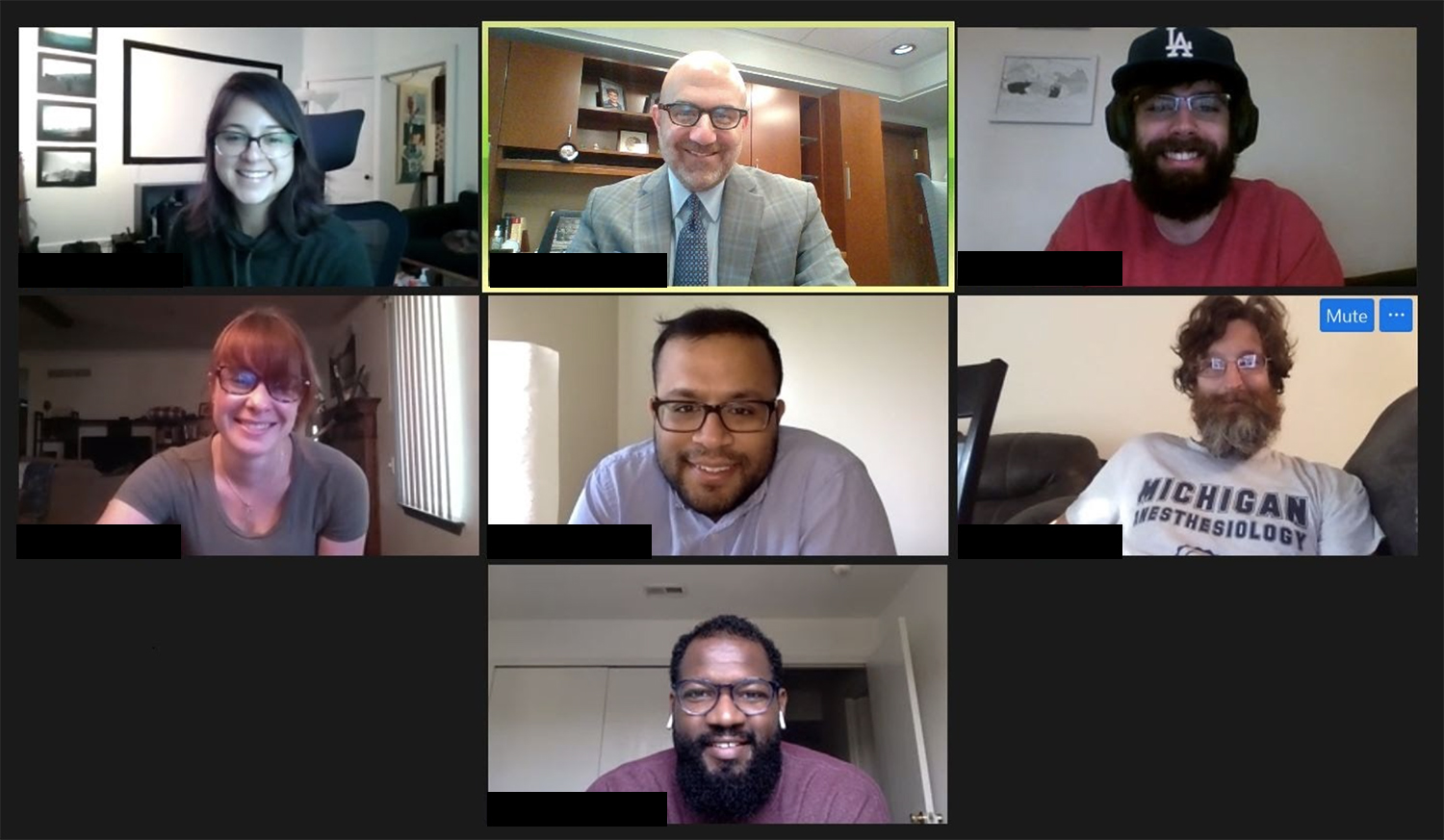
Welcome to the field of academic anesthesiology!
Choosing to go into medicine and deciding on a specialty are two of the biggest decisions you’ll make in your career. We’re glad you’ve found yourself here as you explore whether or not anesthesiology is the right fit for you.
So what’s next?
We encourage you to start with our brief Q&A to get an overview of the field. Next, follow along with our checklist below to connect with anesthesiologists and resources at your school and throughout the field.
Ask an Anesthesiologist
What do anesthesiologists do?
Anesthesiologists are peri-operative physicians who keep patients safe and comfortable while they undergo procedures and surgery. They do this through applied physiology and pharmacology, with responsibilities for inducing unconsciousness, ameliorating pain, and providing support to patients. Anesthesiologists also perform many procedures, including placement of intravenous lines, advanced monitoring (arterial lines, perioperative echocardiography), intubation, and peripheral nerve blocks (to name a few!).
What personality types are best suited for anesthesiology?
Anesthesiology takes all comers! The beauty of the field is that many personality types find excitement in the care of patients in the perioperative period. Additionally, there are many opportunities for advanced fellowship training in many subspecialties, including critical care and pain medicine, allowing you to find a niche within anesthesiology that suits you best!
What skills do I need?
Anesthesiologists are curious, hardworking, procedurally oriented, and like working closely with patients. You also need a willingness to ask questions, work well in teams, and be able to perform well under pressure.
How can I best prepare myself to match with an anesthesiology residency program?
Get to know the specialty! Find mentors who can talk with you about why they love their job, and see if it’s a good fit for your goals.
Finding Your Place
Dr. Jesse Ehrenfeld discusses the many career paths you can take within the field of anesthesiology. Dr. Ehrenfeld is Director of the Advancing a Healthier Wisconsin Endowment and Senior Associate Dean at Medical College of Wisconsin.
The Road to Anesthesiology Residency:
Lessons Learned from Program Signaling
Taking the Next Step
Attend events like a RADAR virtual open house
Learn more about a career in anesthesiology and hear from leaders in the field.
Join an anesthesiology-focused student group at your university
Connect with your peers and get to know what resources are available to you through your medical school.
Connect with the American Society of Anesthesiologists
Learn more about the field with the ASA Medical Student Component’s curated list of tools and resources.
Shadow an attending
See what a typical day looks like and get answers to your questions from someone already in the field.
Complete an anesthesiology rotation
Connect what you’re learning in the classroom with hands-on clinical experience.
Attend a Virtual Event
Learn more about the field of anesthesiology at an upcoming event — or browse our archived events on demand.


